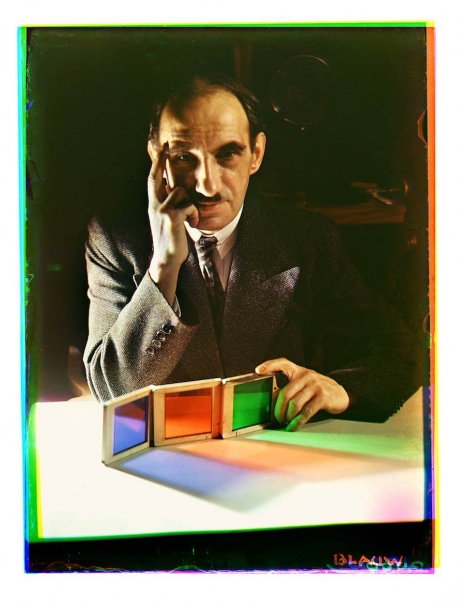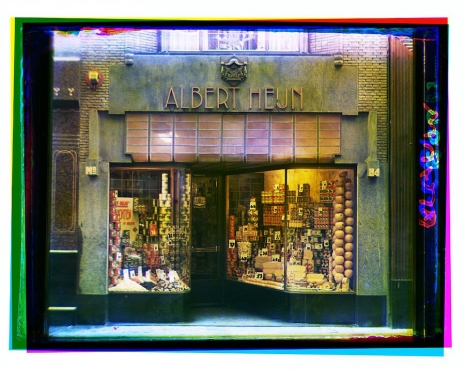
In some parallel universe where we’re all smarter, richer and better looking, Bernard F. Eilers would be as well known as, say George Eastman and the vast Kodak empire.
For Eilers (1878-1951) was a Dutch photographer, inventor, businessman and chemist who among his many other career highs devised (over several years) an astonishing three-color process of photography called foto-chroma eilers in 1935. This was a simple yet effective separation technique which delivered (as it was described at the time) near perfect color reproduction. In this parallel universe it is foto-chroma eilers that became the dominant photographic process and not Kodak.
Eilers demonstrated his foto-chroma eilers in a series of photographs. He snapped day and night street scenes of his home city of Amsterdam. Portraits of his friends. Still lifes and extraordinarily beautiful pictures of flowers.
The use of the three-color separation technique in these incredible photographs made Eilers (briefly) world famous. It lasted until Kodak dominated the market with Kodachrome and made foto-chroma eilers redundant and Eilers almost forgotten.
Which was all sadly inevitable yet still rather interesting as this narrative has a parallel subtext of American domination of the global market.
Eilers photographic style may be a tad more painterly than many of his contemporaries—his work reminiscent of those great artists from the 1800s. But Eilers had an uncanny knack for capturing the very essence of what he photographed—whether this was a sense of space or the rich character of his friends. He was understandably a highly respected photographer—who won awards for his work and exhibited widely and he really really should be better known outside of the Netherlands and Europe and any parallel universe.
The following photographs were created by digitizing 927 glass negatives from the Amsterdam Municipal Archives in 2004.
To achieve first-class picture quality, sets of three practically matching black-and-white negatives had to be selected from a far more sizeable total collection. Assembling these sets was an arduous task: they had not always been filed neatly together and could be found among several glass negative formats, particularly among the 4.5 x 6 cm size. In the end, it appeared that the selection of some sets did not lead to a satisfactory result, but the whole operation nevertheless yielded 309 beautiful prints.
You can read about Eilers and see more of his work here.


More stunning color photographs, after the jump…





